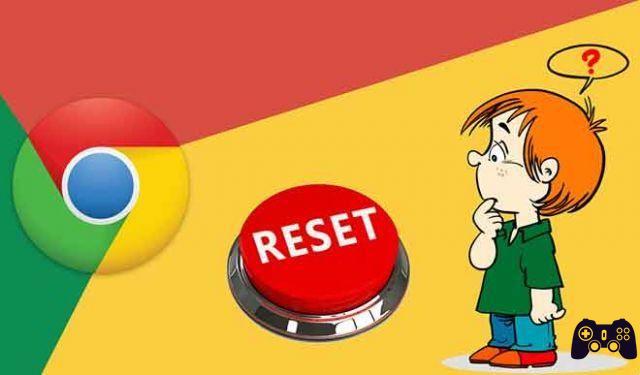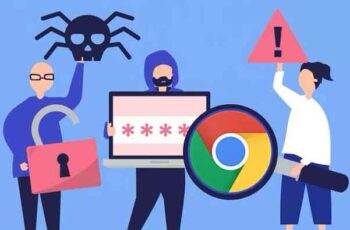
Do you occasionally see Err_quic_protocol_error in Google Chrome? Occasionally you are unable to browse sites using Chrome but need to use other browsers? The Err_quic_protocol_error is an intermittent error that can often be annoying. Here's how to fix Google Chrome's Err_quic_protocol_error.
Typically, the error looks like this:
This site is not reachable, the web page at https://examplesite.com/ it may be temporarily interrupted or have been permanently moved to a new web address,
ERR_QUIC_PROTOCOL_ERROR
Google Chrome is one of the most stable browsers out there. It has been around for years and is being developed by a company whose interest is that you can browse quickly and safely. Although surpassed by Firefox Quantum in terms of speed and functionality, Chrome is still used by millions of users and still remains the foundation for other browsers using Chromium.
The release version of the browser is very stable, but Chrome comes with a variety of experimental features that are often not supported by various devices and websites.
Remember, features often need to be reset to avoid problems, such as an autoplay audio change that accidentally mutes online browser games. While rare, these things do happen and are the price we pay for a state-of-the-art, high-quality browser.
How to manage Chrome extensions, install and uninstall
How to Get Rid of ERR_QUIC_PROTOCOL_ERROR Message in Chrome
A quick word about those websites offering to fix this error with a download. You don't need it this is a very simple solution. Even if I don't name any, the websites that offer a single tool to fix all the problems of Chrome, Windows, or any program, sells snake oil. While they offer a specific patch for this error, you don't need it, so use those programs carefully.
The QUIC protocol is actually pretty cool but rather than hiding the title, I'll show you how to fix the error before we discuss it.
Err_quic_protocol_error appears to occur on fiber networks with fast routers. I have no idea why this happens, but slower ADSL or ADSL2 routers don't seem to have this problem. Anyway, here's how to fix ERR QUIC PROTOCOL ERROR in Google Chrome.
- Open Chrome, type “chrome: // flags” in the URL bar and press Submit.
- Search or locate "QUIC Experimental Protocol".
- Check the box to the right and change the setting from default a Disabled.
- Restart Chrome for the changes to take effect.
This should be sufficient to resolve the Err_quic_protocol_error error in most situations. I have seen a couple of situations where this has not been the case and the only option available was to uninstall and reinstall Chrome. If you need to do it, here's how. After reinstalling Chrome, double check the QUIC flag as above to prevent it from happening again.
About Windows:
- Open the Windows Start menu and find Google Chrome.
- Right-click the entry and select Uninstall.
- Download a new copy from here.
- Select the installer and run to install.
On Mac:
- Right-click the Chrome icon in the Dock and select Logout .
- Use the Finder to locate Chrome and drag the icon to the Trash.
- Download a new copy and install.
If you need to reinstall, this method should keep all your favorites and settings. It replaces Chrome's core files with new ones and will collect bookmarks and everything else from anywhere else on your computer. Chrome should now work fine without Err_quic_protocol_error.
8 solutions for when Google Chrome won't update on Android
What is "Err_quic_protocol_error"
The Quick UDP Internet Connections (QUIC) protocol is a general-purpose transport layer network protocol that Google is working on. The idea is to eventually replace the TCP protocol. By reducing TCP overhead and multiplying the streams rather than running them in succession, QUIC is bound to be much, much faster than TCP.
A typical TCP connection involves a single stream and goes back and forth between the browser and the destination. There is a handshake, acknowledgment, synchronization, configuration and initial data transfer before the first real data packet is sent. This causes a delay and creates the famous bottlenecks. If one TCP packet hangs, the others get stuck behind it causing a delay.
QUIC on the other hand was designed for speed. Rather than multiple TCP installation messages, QUIC does so in one message. QUIC also uses UDP multiplexing which allows further messages to pass even if one is blocked. It also includes built-in congestion control for maximum efficiency.
Another feature of QUIC is error checking. It can handle lost packets with ease and handles loss with speculative retransmission. TCP uses congestion prevention, but this is limited to faster or less congested networks.
Slower or unreliable networks cause TCP headaches. QUIC has its own packet bounding and pacing system to help manage delayed or lost packets.
QUIC has been in development for six years and it's not finished yet. Google is the driving force behind it, but apparently less than 1% of web servers support it. If you want to learn more about QUIC, this resource is excellent.
Further Reading:
- How to fix "Could not read from source file or disk"
- Chrome shows blank page, 7 solutions
- How to uninstall apps on the Chromebook
- Google Chrome doesn't load pages, 7 solutions
- How to restart Google Chrome browser






